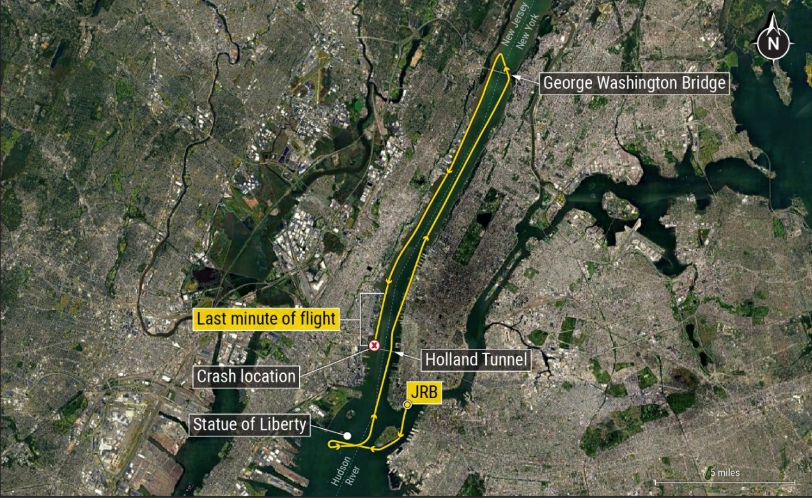General Aviation Accident Bulletin
AVweb’s General Aviation Accident Bulletin is taken from the pages of our sister publication, Aviation Safety magazine. All the reports listed here are preliminary and include only initial factual findings…

Aviation Safety Accident Bulletin
AVweb's General Aviation Accident Bulletin is taken from the pages of our sister publication, Aviation Safety magazine. All the reports listed here are preliminary and include only initial factual findings about crashes. You can learn more about the final probable cause on the NTSB's website at www.ntsb.gov. Final reports appear about a year after the accident, although some take longer. Find out more about Aviation Safety at www.aviationsafetymagazine.com.
December 7, 2021, Statesboro, GA
Cessna 182
The airplane was destroyed when it at collided with terrain at 2124 Eastern time, shortly after takeoff. The solo instrument-rated commercial pilot was fatally injured. Instrument conditions prevailed.
Preliminary ADS-B data show the airplane departed Runway 14 at 2121. Shortly after takeoff, the flight turned south and climbed to about 1000 feet MSL. About 1.8 NM south of the departure airport, the airplane turned left, which tightened into a 360-degree turn during which a maximum altitude of about 1800 feet MSL was reached. A rapid descent followed. A witness observed the airplane in a descent that continued into a rapid descent into a field just beyond his view. There was no record that the pilot filed a flight plan or requested an official weather briefing via telephone or online.
December 8, 2021, Walsenburg, Colo.
Van’s RV-4 Experimental
At about 1013 Mountain time, the airplane sustained substantial damage when it collided with terrain below a canyon rim. The solo pilot sustained fatal injuries. Visual conditions prevailed.
The accident airplane was the leader of a flight of three. After a formation flight, the three airplanes descended for low-level maneuvering. As the flight of three descended, it encountered strong surface winds and turbulence above the canyon rim. The accident pilot’s airplane descended below the canyon rim in a steep left turn and was observed contacting the edge of the canyon at high speed.
December 9, 2021, Houston, Texas
Piper PA 28-140 Cherokee 140
The airplane was destroyed at about 1957 Central time when it collided with terrain, apparently out of control. The student pilot and passenger were fatally injured. Instrument conditions prevailed.
Radar data show the airplane took off at about 1955 and flew to the south-southwest. After about 1.5 miles, the airplane entered a slight descending left turn and its groundspeed increased. The airplane then made a slight right turn; it climbed and groundspeed decreased. The airplane then entered a tight, left descending turn, followed immediately by a hard right descending turn. The descent rate increased before radar data ended. Satellite imagery indicated low stratus and/or fog in the vicinity of the accident site. An AIRMET for instrument conditions had been issued.
December 10, 2021, Orchard, KY
Beechcraft V35 Bonanza
At about 1651 Eastern time, the airplane was substantially damaged when it collided with terrain during low-level maneuvering in instrument conditions. The non-instrument-rated private pilot and the passenger were fatally injured. Instrument conditions prevailed.
According to ADS-B data, the flight neared its destination at about 300-400 feet AGL. The airplane then proceeded north for about a mile and began a left 270-degree turn to the east, followed by a right turn until the airplane was heading north. The airplane then pitched up, gaining about 500 feet, as it approached rapidly rising terrain. The last two data points indicated a descent. Weather reported at 1655 at the destination airport, about 13 miles from the accident site, included a 500-foot ceiling and 10 miles of visibility.
December 10, 2021, Steamboat Springs, Colo.
Piper PA-46-500TP Malibu Meridian
The airplane was substantially damaged when it collided with terrain as its pilot apparently attempted a missed approach. The solo pilot was fatally injured. Instrument conditions prevailed; the flight operated on an IFR flight plan.
The flight was cleared for the RNAV (GPS)-E approach at about 1757. The airplane crossed the final approach fix 600 feet lower than specified and was over the stepdown fix 540 feet too low. Instead of continuing straight ahead to the runway and the beginning of the missed approach procedure, the airplane turned left toward the missed approach holding fix, descended slightly, and then initiated a climb. The last ADS-B data point at 1808:49 indicated an altitude of about 8125 feet MSL about 3.5 miles north of the accident site. The airplane impacted mountainous terrain at about 8172 feet MSL. Destination weather included a ceiling of 1200 feet and one mile of visibility.
December 10, 2021, Bedford, N.H.
Swearingen SA226 SA226-AT Merlin
At about 2330 Eastern time, the airplane was destroyed when it collided with terrain on final approach shortly after the pilot reported an engine failure. The solo instrument-rated commercial pilot was fatally injured. Visual conditions prevailed for the FAR Part 135 on-demand cargo flight.
While conducting the ILS Runway 6 approach, the pilot reported an engine failure at 2330:42, but did not specify which engine. Radio and radar contact were lost at 2330:51, when the airplane was about ¼ mile from the runway. All three blades of the left propeller remained attached to the hub and did not exhibit rotational damage. The three right propeller blade roots remained attached to their engine. The right propeller blades appeared to be at or near the feathered position.
This article originally appeared in the March 2022 issue of Aviation Safety magazine.
For more great content like this, subscribe to Aviation Safety!






